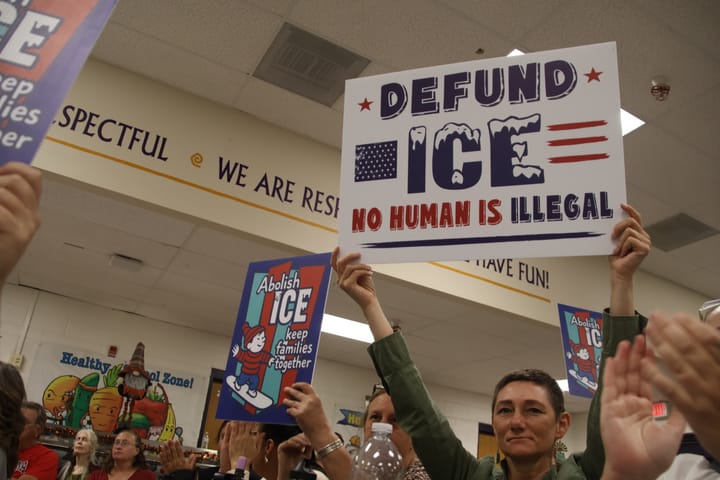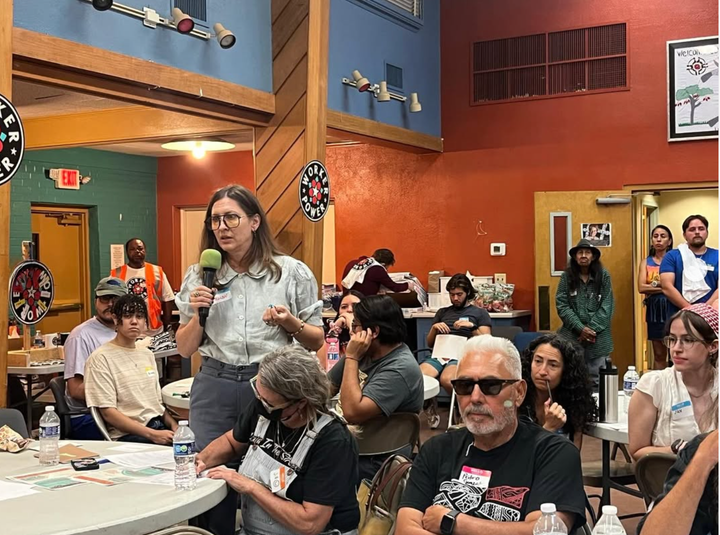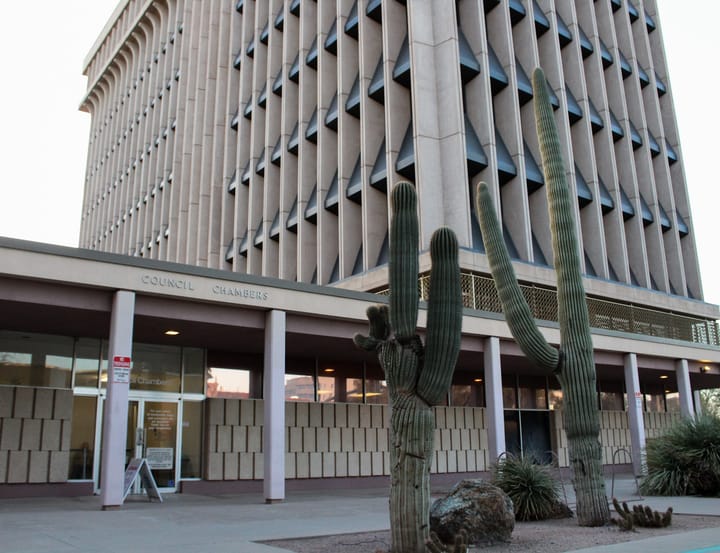Cooling center shift spurs heat outreach in Ward 1
City and Red Cross volunteers canvassed Ward 1 to share heat safety information and promote a new cooling center ahead of Tucson’s first extreme heat wave of the summer.
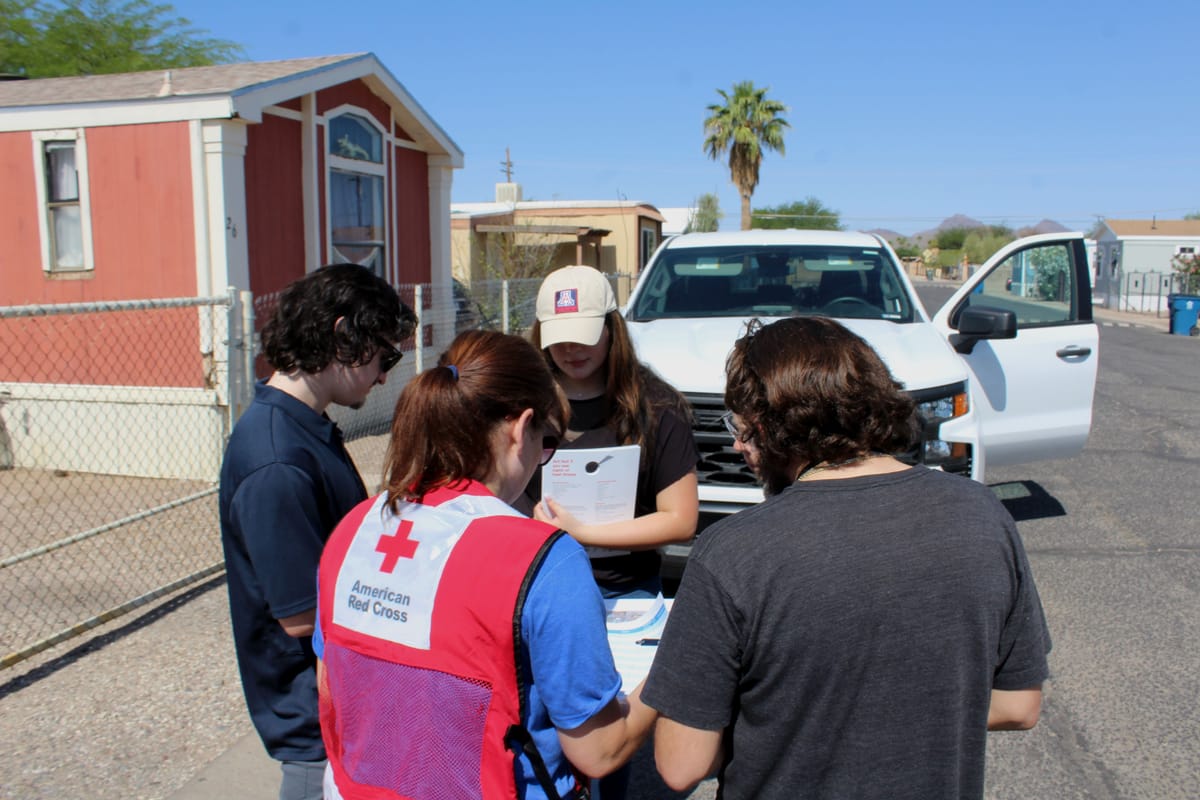
Tucson temperatures soared last week, peaking at 110 degrees on Thursday and prompting many community members to seek refuge during daylight hours.
In advance of the summer’s first extreme heat wave, the City of Tucson’s Housing and Community Development Department teamed up with the Red Cross to spread the word about heat safety to some of Ward 1’s most vulnerable residents.
Tall mesquite and pine trees lined a lake near John F. Kennedy Park, where Red Cross staff and volunteers met the morning of June 11 to inform neighbors that the Fred Archer Center on South La Cholla Boulevard had replaced the El Rio Neighborhood Center on Speedway as the closest cooling center.
“Before we started the program, it was the outreach workers doing all of this,” said Thelma Magallanes, coordinator for the city’s Multidisciplinary Outreach Team. “Now that we have the volunteer groups, it helps a lot because it’s more time that people can spend out on the field.”
The Multidisciplinary Outreach Team is new and plans outreach events for the unhoused community. The team is part of the city’s Housing First program and has only been funded for about a year.
“What we’re doing with this program is very intentional,” Magallanes said. “We use data mapping through 911 calls to then identify the hotspots in the City of Tucson and Pima County.”
Tucson Mayor Regina Romero said in a news release that moving the westside cooling center from El Rio to the Archer Center was strategic.
“Adding a cooling center in close proximity to an area with such a high number of manufactured homes can save many lives, especially in the event of a prolonged blackout during the summer season,” Romero said.
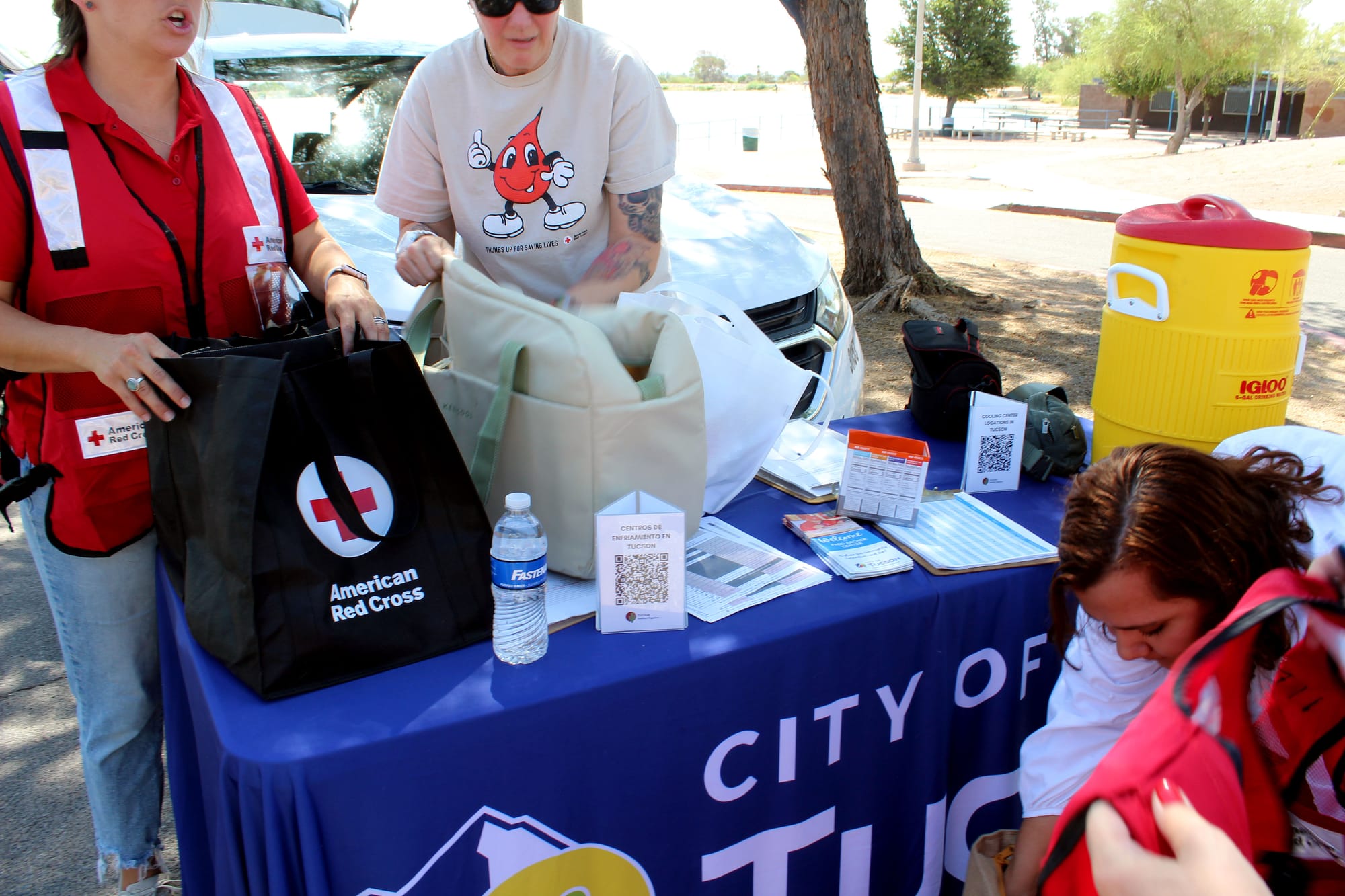
The change offers more inclusive access for residents in an area that includes 11 mobile home parks with 2,841 units and has one of the highest rates of heat-related 911 calls, Romero said.
Elderly people, the unhoused community, pregnant women, children and outdoor workers are all at higher risk for heat-related illnesses.
“A lot of times they’re on fixed incomes, so that might be one of the things they have to worry about, or there’s a master electricity person, like one utility person, and they might give them allotments,” said Ethan Van Alter, a member of Old Pueblo Community Services, an organization that works to end homelessness.
The group got its start in 1996 helping people find safe and affordable housing after transitioning out of prison. Now, Old Pueblo provides affordable housing to 400 people daily and has expanded to offer behavioral health services.
Alter was assigned to Team 5, along with Tucson Electric Power interns Iliana Islas and Luis Pesqueria, retired art historian and team lead Magallanes. University of Arizona student Islas and recent UA graduate Pesqueria said they learned about the canvassing event through a TEP email and wanted to help.
Armed with water, Gatorade and sunscreen, Magallanes’ team visited mobile home parks and neighborhoods, traveling in two vehicles loaded with care bags for residents.
The first mobile home park was filled with homes painted in pastel greens, blues, pinks and yellows. Almost every house had a dog that barked as team members knocked on doors.
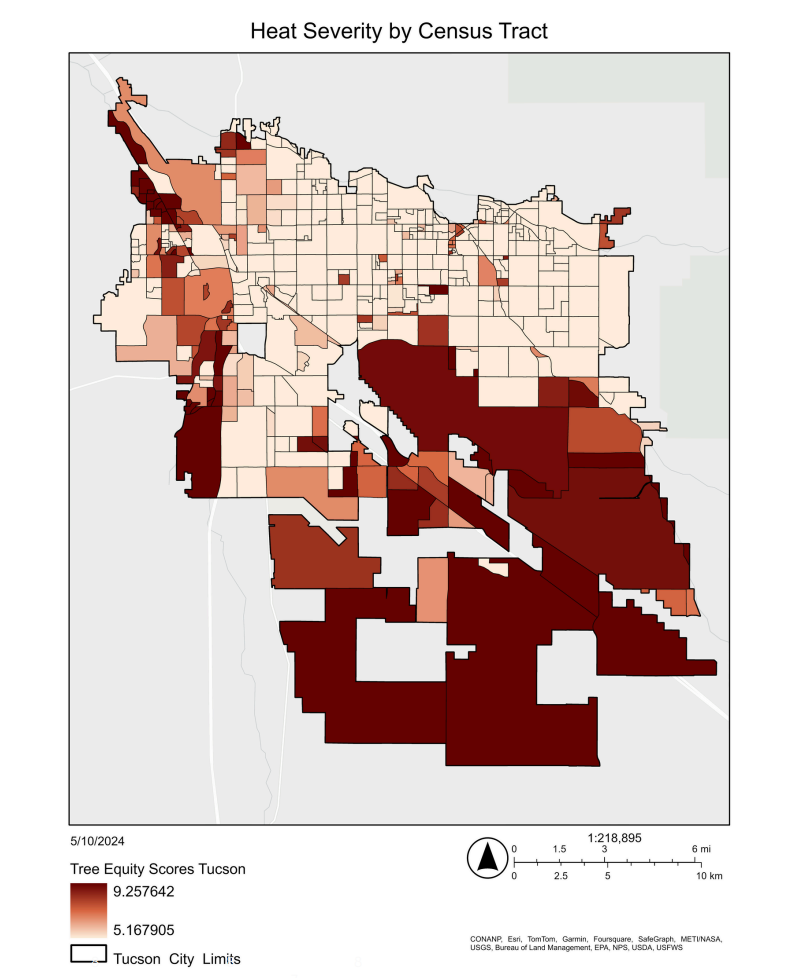
If no one responded, the team left heat safety packets on fences with information about heat illness prevention and cooling center locations. If someone answered, they received the same information, along with a bag filled with water, sunscreen, instant ice packs, cooling towels and reusable water bottles.
Magallanes said these neighborhoods often lack resources to help residents learn about nearby cooling centers and that the team sees many fatalities among the unhoused community during the summer.
“It still breaks my heart,” she said.
Last year, the team worked to secure a Section 8 housing choice voucher for an individual who ultimately died from exposure to extreme weather. Although the voucher had been approved, the team never had the opportunity to deliver the news.
“It was very painful for the whole team,” she said.
Most people working on the outreach team have lived experience of being unhoused, Magallanes said.
“That’s what is really making a difference in the way we do our outreach,” she said.
After canvassing, Magallanes made a note of the few residents the group was able to reach before heading back to the lake. While the group didn’t speak to many people, those who did answer their doors were grateful for the information and kits.
“This is why we do this,” Magallanes said.
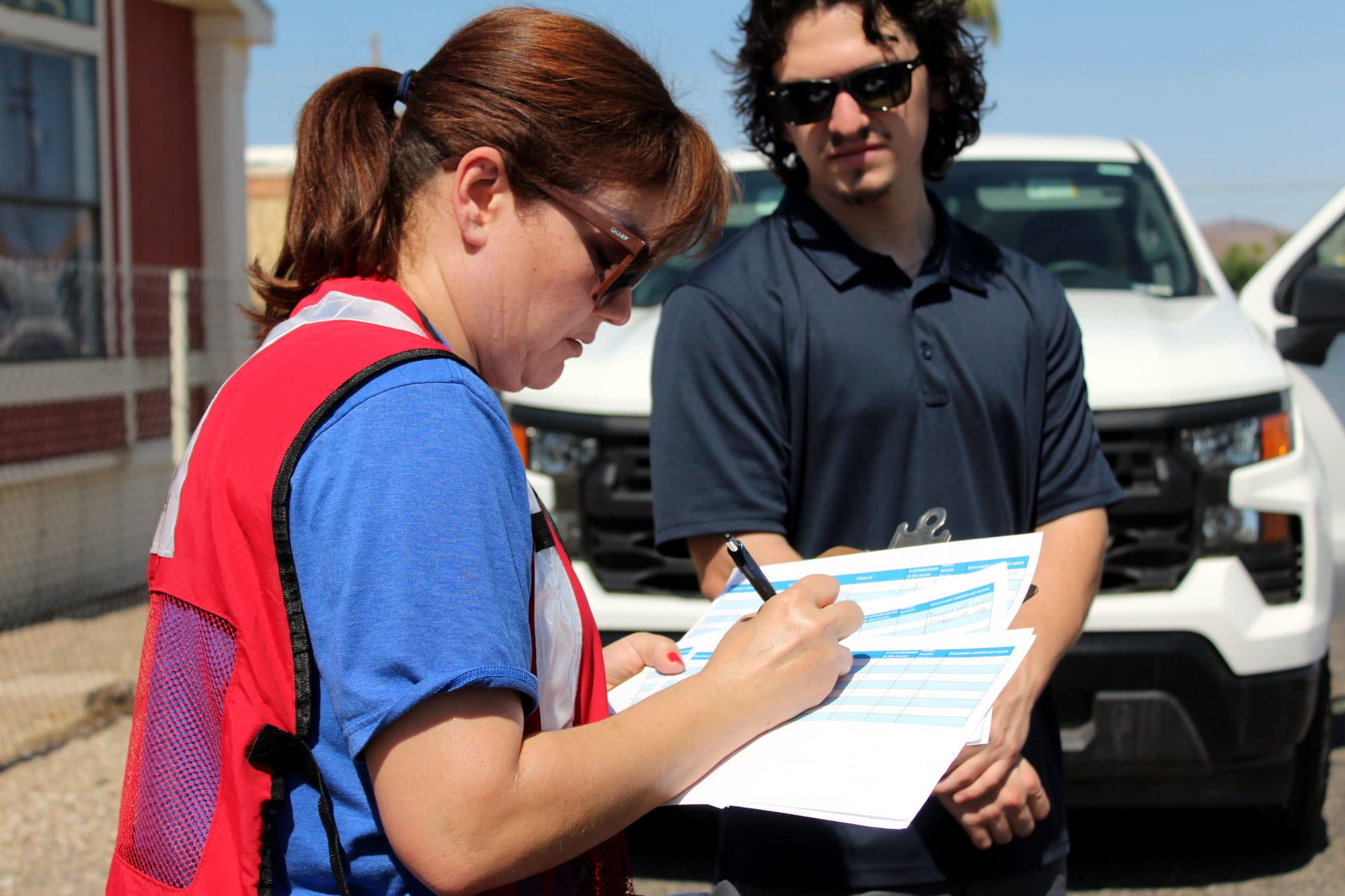
The new cooling center is part of the city’s Heat Action Roadmap and Heat Protection Ordinance, adopted last June.
Between 2023 and 2024, heat-related deaths in the city dropped from 126 to 107. Since 2023, the number of cooling centers has increased from 13 to 40.
The roadmap also includes:
- Coordinated public awareness campaigns across jurisdictions
- Expanded access to cooling infrastructure, including pools and splash pads
- Free transit and mobile cooling units to provide relief for people without transportation
- Distribution of more than 900 heat relief kits to vulnerable residents
The city’s Heat Protection Ordinance set a precedent for heat safety in Arizona, requiring all city workers and contractors exposed to extreme heat to follow heat safety protocols to prevent illness, according to the release.
“Through these measures, Tucson is working to make sure that vulnerable populations are not left behind in the face of extreme heat and is setting a standard for how municipalities can address climate challenges while protecting public health,” Romero said in the release.
The team is holding a care bag assembly event for future canvassing on Thursday. The city's cooling centers are open daily through Aug. 31 from noon to 4 p.m.
Arilynn Hyatt is a journalism major at the University of Arizona and Tucson Spotlight intern. Contact her at arilynndhyatt@arizona.edu.
Tucson Spotlight is a community-based newsroom that provides paid opportunities for students and rising journalists in Southern Arizona. Please consider supporting our work with a tax-deductible donation.

